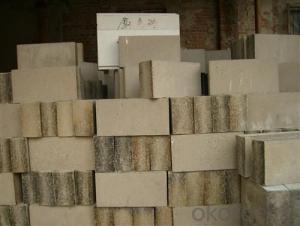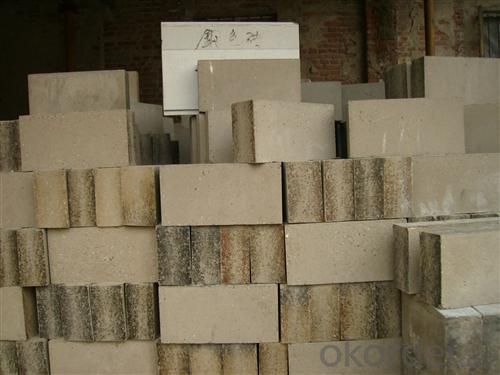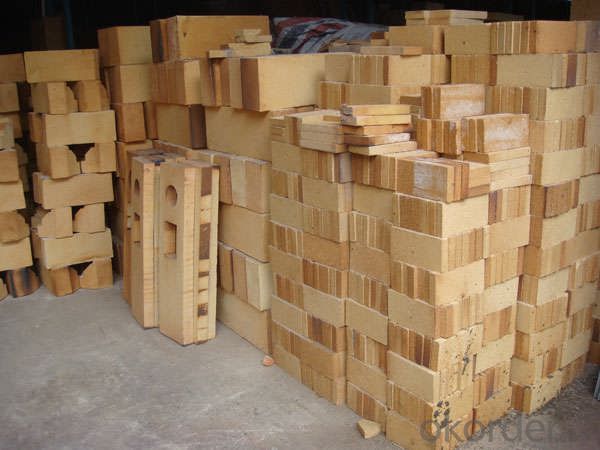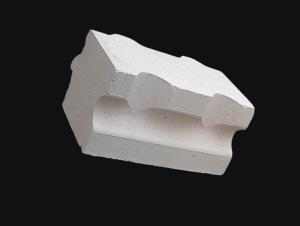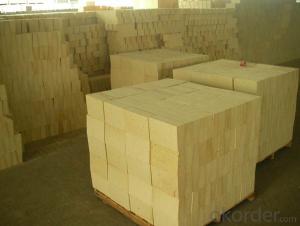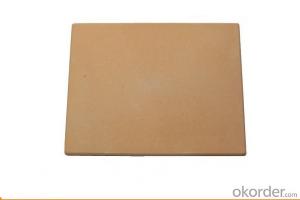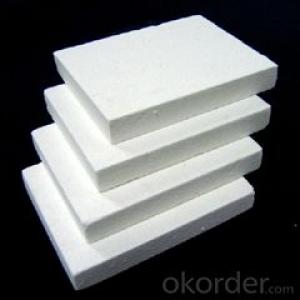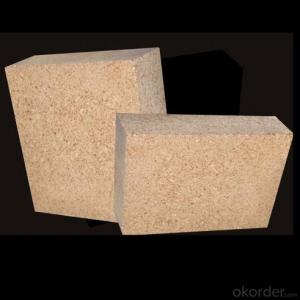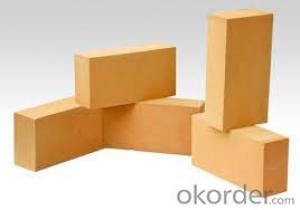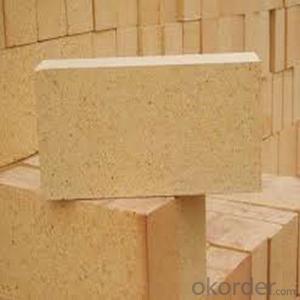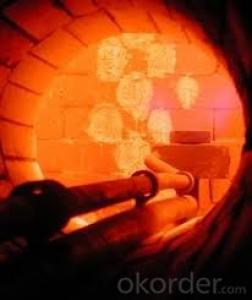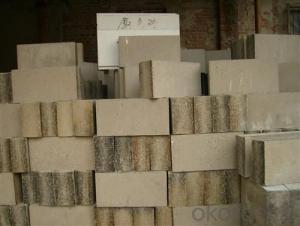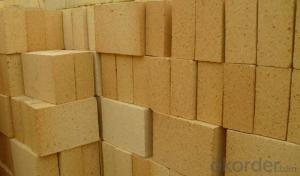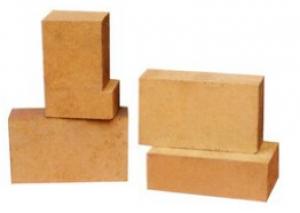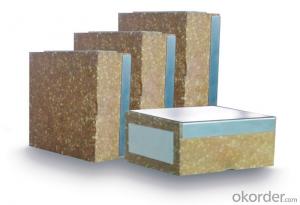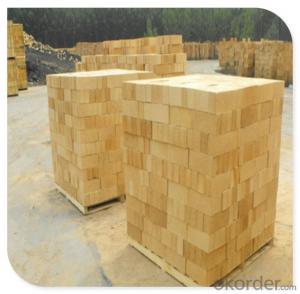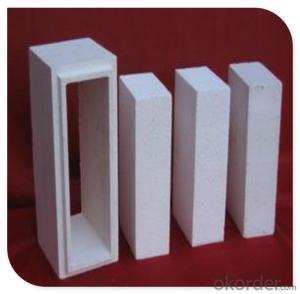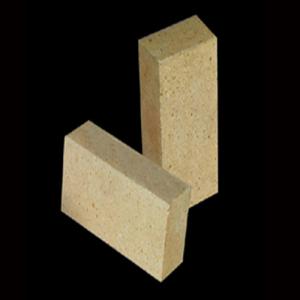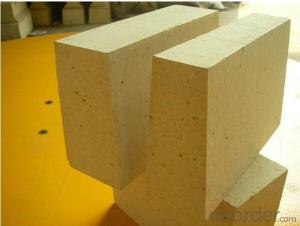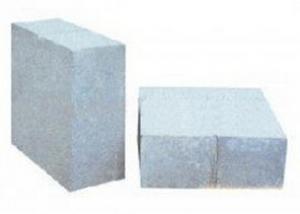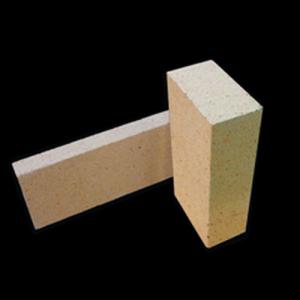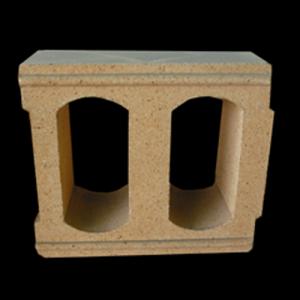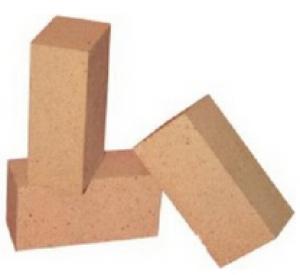High Alumina Brick - Wholesale Firebrick Prices
- Loading Port:
- China main port
- Payment Terms:
- TT OR LC
- Min Order Qty:
- 1000 pc
- Supply Capability:
- 100000 pc/month
OKorder Service Pledge
OKorder Financial Service
You Might Also Like
Quick Details
| Place of Origin: | Shandong, China (Mainland) | Shape: | Brick | Material: | Alumina Block |
| SiO2 Content (%): | 20% | Al2O3 Content (%): | >65% | MgO Content (%): | 0.5% |
| CaO Content (%): | 0.01 | Refractoriness (Degree): | 1770°< Refractoriness< 2000° | CrO Content (%): | 0.1~0.3% |
| SiC Content (%): | 0.1~1.4% | Model Number: | SK38 STD | Brand Name: | CNBM |
| Name: | firebrick | AL2O3 content: | 65% | Density: | 2.4g/cm3 |
| Size: | 230*114*65mm | Refractoriness: | ≤1790℃ | Packing: | wood pallet |
| Standard: | ASTM,JIS | AL2O3+SIO2: | 95% | Porodity: | 23% |
| Working temp: | 1520C |
Packaging & Delivery
| Packaging Details: | Standard export wooden pallet with PET strap fixed, paper or non-woven fabrics between layers, finally wrapped with plastic shrink film from outside. |
| Delivery Detail: | 20 days |
wholesale high alumina firebrick prices
Product Description
High alumina bricks for general uses are mainly made from super quality Bauxite, bonding chamotte and additives, being high pressure pressed and sintered in high temperature.
Application:
They were widely used in all parts of furnace lining of metallurgic, petroleum, construction materials, machinery and militaries, etc.
Features and advantages:
1. The dimensions are more exactly.
2. Low iron content and impurities
3. Good thermal stability;
4. High refractoriness,
5. anti alkaline /acid erosions,
6. Mechanical and chemical properties are very good.
7. Strong thermal shock resistance.
Firebrick Technical Index
Item | High Alumina Brick | |||
DKS-36 | DKL-36 | DKS-38 | DKL-38 | |
Al2O3 | ≥48 | ≥55 | ≥65 | ≥75 |
Refractoriness °C | ≥1750 | ≥1770 | ≥1790 | ≥1790 |
Refractoriness under load°C | ≥1420 | ≥1470 | ≥1500 | ≥1520 |
Permanent liner change% | 0--0.2 | 0.1--0.4(1500°C×2h) | ||
Apparent Porosity % | ≤22 | ≤22 | ≤23 | ≤23 |
Cold crushing strength Mpa | ≥39.2 | ≥44.1 | ≥49.0 | ≥53.9 |
Bulk Density g/cm3 | 2.25-2.6g/cm3 | |||
Common sizes:
Straight type | Arch type | Wedge type |
L×W×H (mm) 230×114×65 230×114×75 230×114×32 220×110×60 220×110×50 220×110×40 220×110×30 | L×W×H/h (mm) 230×114×65/55 230×114×65/45 230×114×65/59 220×110×65/50 220×110×75/65 220×110×60/40 | L×W×H/h (mm) 230×114×65/55 230×114×65/45 220×110×75/65 220×110×60/40 |
Other sizes according to customer requirements
| ||
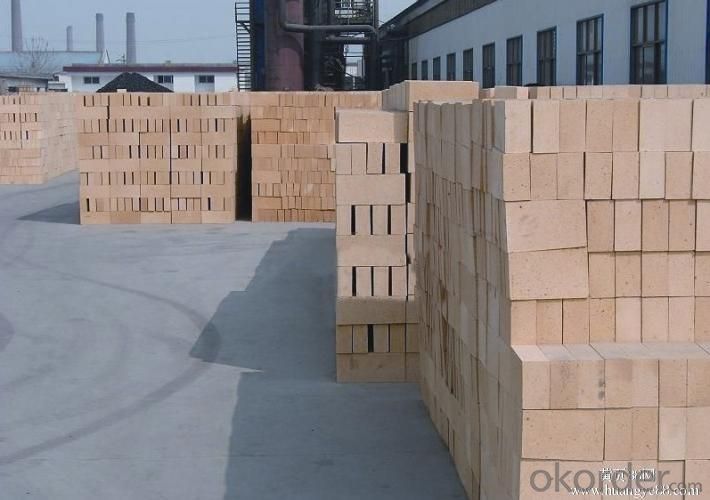
- Q: Is there a big difference between two high alumina brick and one high alumina brick?
- The difference between the two kinds of high alumina bricks is great. I perennial in Zhengzhou was responsible for the production and sale of colt refractories
- Q: What refractory material does cupola lining use?
- It's made of high quality refractory material: 1770 ~ 2000 centigrade.
- Q: What are the reasons for the decline in the performance of high alumina bricks when we use high alumina refractory bricks?
- All the raw materials adding order, mixing time, material and material moisture trapped. 4, the pressure and the volume density of Pei brick and brick Pei size etc..
- Q: What's the price of high alumina refractory bricks?
- Their refractory bricks are of good quality and low ex factory prices. Special high alumina refractory brick factory price of 1900 yuan / ton, a high alumina brick factory price of 1650 yuan / ton... This price applies to standard size, size 230*114*65mm, more products, prices go to see.
- Q: What is the difference between T3 refractory bricks and high alumina refractory bricks?
- The T3 in T3 refractory bricks refers to the model indicating that the refractory brick model is T-3, and that the corresponding T-3 model is 230*114*65 (mm)
- Q: Difference between low creep high alumina brick and ordinary high alumina brick
- Low creep and high alumina brick is based on the theory of "three stones". The combination of bauxite and clay as the main raw material, adding kyanite, andalusite and sillimanite, commonly known as the "three stone" control, physicochemical index and size composition, using alumina mullite corundum + + raw materials such as technical scheme. In the production process, first to detect and control indexes of raw materials, crushing, grinding, sieving process, according to the distribution ratio of ingredients, the size and moisture control of mud mixing after to meet the requirements of forming and molding machine, the use of qualified abrasives, blow molding control number, size and flash at the same time, the detection efficiency of semi-finished products and meet the requirements. Production process: high temperature calcination of high-grade alumina, adding small creep rate of high temperature materials, by high-pressure molding and high temperature firing. It has the characteristics of high strength, low creep rate and high use temperature. Widely used in high temperature furnace, hot air furnace hearth lining, brick and so on.
- Q: How to reduce porosity of high alumina brick
- In order to reduce the porosity of high alumina brick, the corresponding measures should be taken from the selection of raw materials, batching, mixing, molding and firing.The water absorption rate of the first grade high alumina bauxite clinker should be less than 5%, and the water absorption rate of two grade high alumina material should be less than 7%. Fine grinding of soft clay and bauxite clinker with less than 4% water content. Mixed fine milling ingredients with this, can reduce the porosity of bricks.
- Q: What's the weight of the refractory bricks?
- Fireclay refractory bricks: 3.4kg-3.8kg - according to the quality of raw materials, prices ranging from 1 yuan to 2.7 yuan, high alumina refractory brick: three, high aluminum in 3.9kg or so. Ordinary T-3 firebrick weight calculation method: 230*114*65*2.2/2.1.
- Q: What kind of material is the general metal case?
- Ordinary computer chassis and the material itself does not produce high-energy radiation, only in the space environment of the computer is the external defense requirements, and in the space structure, the use of lead as protective materials, unbearable weight.
- Q: What is the high temperature limit of refractory bricks and refractory soil?
- Refractory bricks are stone powder and clay paste. They are fired in a kiln of 1300 degrees. The upper limit is 1500 degrees above normal pressureRefractory bricks - refractory materials of a specified shape and size.
Send your message to us
High Alumina Brick - Wholesale Firebrick Prices
- Loading Port:
- China main port
- Payment Terms:
- TT OR LC
- Min Order Qty:
- 1000 pc
- Supply Capability:
- 100000 pc/month
OKorder Service Pledge
OKorder Financial Service
Similar products
Hot products
Hot Searches
Related keywords
